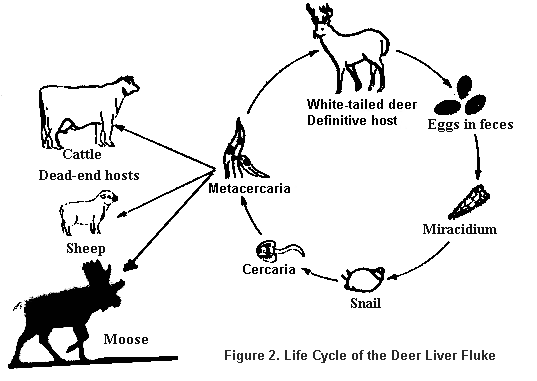
Ecology
Snails that are abundant in wetlands, like the Fossaria parva, tend to be very important to the eco-system. Many serve as intermediate hosts (hosts in which asexual reproduction occurs) for parasites (including those from the Phylum Nematoda and Class Trematoda), a food source for other animals and aid in decomposition (Averbeck, 1989). F. Parva is known to be an intermediate host for Fasicioloides magna, or more commonly known as the deer liver fluke. In one study that was researching the disturbution of F. magna, 687 cercariae larva of the parasite was found on a single pygmy fossaria (Bellet, 2006)! The pygmy fossaria get infected with the parasitic flatworm when fecal matter of the white-tailed deer (F. magna's definitive host) that contains the worms eggs is expelled and comes in contact with the snail's habitat. Once infected, F. magna reproduce asexually within the snail and its cercariae larva are released (U.S. Fish and Wildlife Service, 1999). Below is a diagram on the fluke's complete life cycle.
